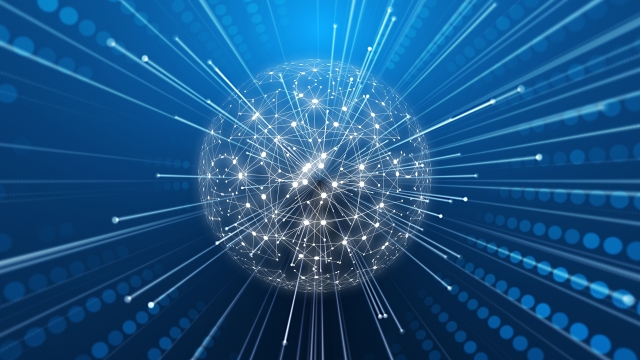
In today’s digital age, where technology continues to advance at an exponential rate, one phenomenon has sparked both curiosity and concern: deepfakes. Deepfake technology, a term derived from the combination of "deep learning" and "fake," is a captivating yet controversial development in the field of artificial intelligence. With the power to manipulate and alter visual and audio content to an unprecedented degree, deepfakes have become a double-edged sword, blurring the lines between reality and fiction.
At its core, deepfake technology utilizes sophisticated algorithms and neural networks to fuse the likeness of one person onto the body of another in videos or images. By analyzing vast amounts of data, these algorithms are capable of recreating facial expressions, voice patterns, and mannerisms, leading to the creation of incredibly convincing digital impersonations. This capability has proven to be both fascinating and alarming, as it introduces a new era of media manipulation that has both creative and malicious potential.
One of the most prominent concerns with deepfakes revolves around the spread of misinformation and its potential impact on society. With the ability to fabricate video evidence, false narratives can be easily propagated, casting doubt on the authenticity of digital media. In a world already grappling with the challenges of fake news, the rise of deepfakes has raised questions about trust, credibility, and the increasing difficulty of discerning fact from fiction.
Additionally, deepfake technology poses significant risks when it comes to privacy and consent. As the process often requires a substantial amount of source material, individuals may find their images or voices exploited without their knowledge or approval. Deepfake pornography, for example, has become a concerning issue, as it enables the creation of explicit content involving unsuspecting victims. The potential psychological, emotional, and reputational harm caused by these unauthorized and non-consensual uses cannot be overlooked.
As deepfakes continue to evolve and become more accessible, it is crucial to address the ethical implications and potential consequences they bring forth. Striking a balance between innovation and responsibility is essential in ensuring that this technology is not misused or abused. By actively engaging in ongoing discussions and implementing safeguards, we can navigate this fascinating but complex world of deepfakes while safeguarding the principles of truth, privacy, and consent.
Understanding Deepfakes: A Closer Look at the Technology
Deepfakes have emerged as a fascinating technology that allows for the creation of incredibly realistic fake videos. By employing sophisticated artificial intelligence (AI) algorithms, deepfakes have the capabilities of seamlessly swapping faces or manipulating facial expressions in existing videos. This extraordinary tool has gained significant attention and raised concerns regarding its potential implications for society and individuals.
The underlying concept behind deepfakes lies in the ability to use machine learning algorithms, specifically generative adversarial networks (GANs), to synthesize highly authentic-looking videos. These GANs consist of two neural networks: the generator and the discriminator. The generator generates the deepfake video, while the discriminator aims to distinguish between real and fake videos. Through an iterative training process, the networks improve their capacity to generate increasingly convincing deepfakes.
The technology’s advancements have enabled deepfakes to not only mimic facial movements accurately but also manipulate the entire appearance of an individual in a video. From altering hairstyles to transforming skin tones, deepfakes can radically transform a person’s visual representation on screen. This ability opens a world of creative possibilities for artists and filmmakers but also raises serious concerns about potential misuse or harm.
https://faceswap.akool.com/
Deepfakes, although currently associated with controversies and ethical dilemmas, can also serve as a reminder of the increasing power and capabilities of AI technology. This technology underscores how far we have come in terms of creating digital content that can blur the line between reality and fiction. As deepfake techniques continue to evolve, it is crucial for us as a society to understand, analyze, and navigate the potential risks and benefits that this technology brings forth.
The Ethical Dilemma of Deepfakes: Implications and Concerns
The rise of deepfake technology has sparked a major ethical dilemma, raising serious implications and concerns for various aspects of our society. As this rapidly evolving technology becomes more sophisticated and accessible, it poses considerable risks and challenges that demand immediate attention.
One of the primary concerns surrounding deepfakes is their potential to manipulate and deceive individuals. By seamlessly grafting one person’s face onto another’s body in videos or images, deepfakes have the power to create convincing but entirely fabricated scenarios. This raises alarming issues related to misinformation, identity theft, and privacy invasion. The ability to convincingly impersonate someone can lead to severe consequences, such as damaging reputations, creating social unrest, or enabling criminal activities.
Furthermore, the impact of deepfakes on public discourse and trustworthiness cannot be understated. The manipulation of audio and video content raises the possibility of manipulating public opinion and distorting reality. Deepfakes can be used to spread false information, exacerbate conflicts, or manipulate election outcomes. The erosion of trust in media sources and the blurring of the line between truth and fiction are serious implications that must not be taken lightly.
Lastly, deepfake technology can have a profound impact on personal and professional relationships. Individuals may find their images or videos misused without consent, leading to emotional distress and damage to their social life or career prospects. The ability to convincingly fabricate encounters or events can cause doubts and suspicions in personal relationships, potentially leading to a breakdown in trust and the disruption of social fabric.
In conclusion, the remarkable advancements in deepfake technology present an ethical dilemma with far-reaching implications. The potential to deceive, manipulate, and distort reality raises concerns about trust, privacy, and the overall stability of society. Addressing these challenges requires a comprehensive approach that includes technological countermeasures, legal frameworks, and public awareness campaigns to prevent the malicious use of deepfakes and protect individuals and communities from their harmful effects.
Countering Deepfakes: Strategies and Solutions
The rise of deepfake technology has brought about numerous challenges in the realm of media and online information. As these manipulated videos and images continue to circulate on various platforms, it becomes crucial to develop effective strategies and solutions to combat their potential harm. Here, we will explore three key approaches in countering deepfakes.
Detection and Classification
One of the primary ways to combat the impact of deepfakes is through the development and deployment of advanced detection and classification techniques. By utilizing machine learning algorithms, researchers and technology experts aim to identify signs of manipulation within multimedia content. These algorithms can be trained to distinguish between genuine and manipulated videos or images, enabling quick and accurate identification of deepfakes.Verification and Authentication
To establish credibility and trustworthiness in digital media, verification and authentication mechanisms play a crucial role. Implementing robust verification processes can help confirm the authenticity of the source and content of a video or image. By utilizing techniques such as blockchain technology or watermarking, it becomes possible to trace the origins of media files and ensure their integrity, making it harder for deepfake content to go undetected.Public Awareness and Education
In the battle against deepfakes, public awareness and education are essential. Informing individuals about the existence and potential risks of deepfakes empowers them to become more critical consumers of online media. By educating the public on how to identify signs of manipulation and encouraging responsible sharing practices, we can collectively reduce the spread and impact of deepfake content.
In conclusion, countering deepfakes necessitates a multidimensional approach that combines cutting-edge technology, verification mechanisms, and public awareness efforts. By leveraging the power of artificial intelligence and emphasizing media literacy, we can mitigate the risks posed by deepfakes and safeguard the integrity of information in the digital age.



